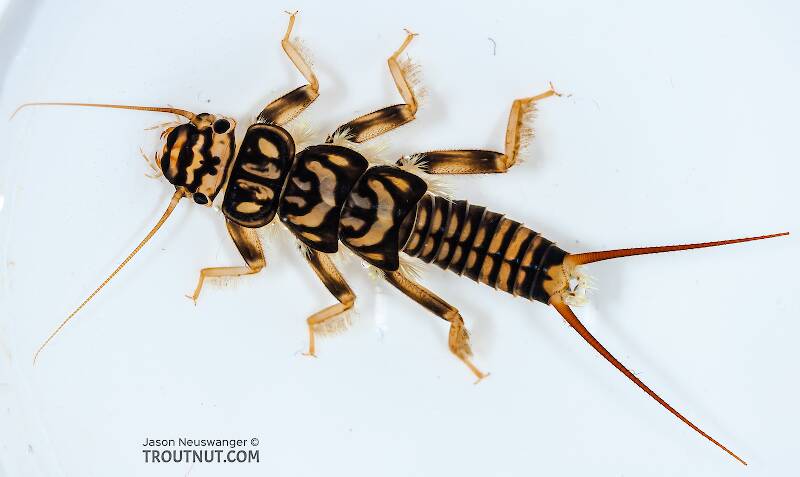
Blue-winged Olives
Baetis
Tiny Baetis mayflies are perhaps the most commonly encountered and imitated by anglers on all American trout streams due to their great abundance, widespread distribution, and trout-friendly emergence habits.
Featured on the forum

Troutnut is a project started in 2003 by salmonid ecologist Jason "Troutnut" Neuswanger to help anglers and
fly tyers unabashedly embrace the entomological side of the sport. Learn more about Troutnut or
support the project for an enhanced experience here.
GONZO on Apr 3, 2007April 3rd, 2007, 4:53 am EDT
From the anal gills and the markings, this appears to be Agnetina--probably capitata.
Boyle on May 7, 2007May 7th, 2007, 2:25 pm EDT
In case you didn't know, there is an excellent color drawing of Perla capitata, as the species was formerly known, which you can compare to your excellent color photographs. It serves as the frontispiece to Peter W. Claassen's Plecoptera Nymnphs of America North of Mexico (Springfield, Ill: The Thomas Say Foundation, 1931).On page 45 Claassen notes: "...easily recognized by the two dark transverse bands across the head, the two dark trabnsverse bands on the femeora, the presence of caudal gills and the yellow and dark banded abdomen." As with you, Claasssen was at Cornell.
Regards,
RH Boyle, Cooperstown, NY
Regards,
RH Boyle, Cooperstown, NY
Troutnut on May 8, 2007May 8th, 2007, 4:14 am EDT
Thanks Boyle, good info!
Jason Neuswanger, Ph.D.
Troutnut and salmonid ecologist
Troutnut and salmonid ecologist
Quick Reply
Related Discussions
Topic
Replies
Last Reply
Acroneuria specimen moved from genus to species level
In Acroneuria carolinensis Stonefly Nymph by Entoman
In Acroneuria carolinensis Stonefly Nymph by Entoman
0
Mar 11, 2012
by Entoman
by Entoman
4
Mar 11, 2012
by Entoman
by Entoman
2
Mar 21, 2007
by CalebBoyle
by CalebBoyle




